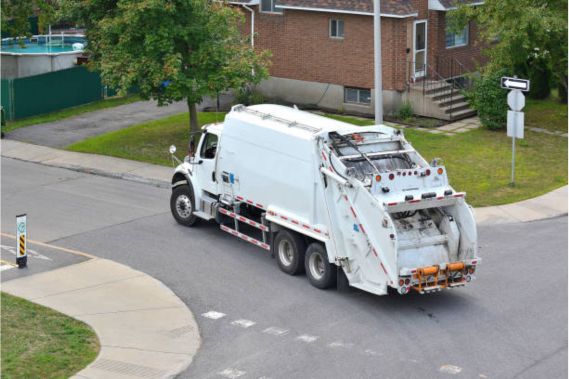Everything You Need to Know About the Resident Return Visa (RRV) in Australia

If you are a permanent Australian resident who wishes to go abroad but, nevertheless, come back to Australia, you need a Resident Return Visa (RRV). Permanent residency, most people believe, is forever. Not so when you travel internationally. A Resident Return Visa ensures you return to Australia after your rights to travel expire. This blog is going to tell you all about the RRV in plain English.
What is a Resident Return Visa?
A Resident Return Visa permits former citizens or permanent residents of Australia to return to the nation after they have been outside Australia. Permanent residency permits you to reside and work in Australia, but it confers only five years of travel entitlements. You may remain in Australia for more than five years, but you cannot re-enter if you leave without an RRV.
Who Needs a Resident Return Visa?
You require an RRV if:
- You are a resident of Australia on a permanent basis.
- Your five-year travel entitlement has reached the end of its date or is approaching that time.
- You wish to depart from Australia and return.
- You are an erstwhile permanent resident or citizen who have lost citizenship.
Even if you have been residing in Australia for decades, if your right to travel runs out, you will not be able to return after you depart from the nation. That is why the RRV matters so much.
Types of Resident Return Visas
There are two broad categories of RRV:
1. Subclass 155 Visa – For individuals who have spent considerable time in Australia.
2. Subclass 157 Visa – For individuals who have not recently lived in Australia but have compelling reasons to return.
The subclass 155 visa is the more standard one. It can grant you up to 5 years of travel rights, depending on how long you’ve been living in Australia.
How to Be Eligible for the Resident Return Visa
In order to qualify for the Resident Return Visa, you need to follow some easy conditions:
- You should be, or have previously been, a permanent resident or Australian citizen.
- You need to have been in Australia for at least 2 years within the past 5 years. This qualifies you for the complete 5-year RRV.
- If you have not lived for 2 years, you can still receive the visa for a limited period of time if you have good ties to Australia.
Good ties may be:
- Having a job in Australia.
- Having family in Australia.
- Having a business in Australia.
Individuals who apply for Business Visas Australia also tend to apply for the RRV so that they can continue their business interests while working overseas.
How to Apply for an RRV
It is a straightforward process that can be completed online:
1. Visit the official Australian immigration website.
2. Create an ImmiAccount.
3. Complete the RRV application form.
4. Attach supporting documents.
5. Pay the visa cost.
The fee for the RRV (Subclass 155 or 157) normally costs around AUD 465. Processing might be fast, particularly if you have been residing in Australia for many years.
Documents You May Need
To apply for a Resident Return Visa, have these documents ready:
- Passport.
- Permanent residence proof or previous visa.
- Documentary evidence of duration in Australia.
- Tie proofs to Australia (such as employment letters, electricity bills, or business records).
In case of Business Visas Australia, you will also require business registrations, tax returns, or client agreements to demonstrate business ties to Australia.
How Long is the Visa Valid?
The duration of your RRV varies with the length of time you’ve stayed in Australia:
- If you have resided for 2 years or more in the past 5 years: You can be granted a 5-year travel facility.
- If you have a stay of less than 2 years: You can be granted a 1-year visa or even a 3-month visa based on your individual ties.
Can You Renew a Resident Return Visa?
Yes, you can renew it as long as you are eligible. Lots of long-term residents renew their RRV every five years if they travel a lot. It doesn’t have an expiry on how often you can apply, provided that you fulfill the rules each time.
What If Your RRV is Refused?
Occasionally, your Resident Return Visa can be refused. This often occurs if:
- You fail to demonstrate sufficient connection to Australia.
- You have a criminal history.
- You didn’t reside in Australia for long enough.
If your visa is rejected, you can:
- Request a review at the Administrative Appeals Tribunal (AAT).
- Reapply with improved supporting documentation.
How to Make Your Application Simple
- Always apply before your rights to travel expire.
- Maintain a record of your all your stays in Australia.
- Ensure your personal and contact details are current.
- If operating a business, ensure your records are clean and ready to disclose.
Final Thoughts
The Resident Return Visa is crucial for individuals who wish to retain their resident status when leaving Australia. If you are about to travel abroad, ensure that you check the status of your visa. Do not wait until the last moment. Individuals with Business Visas Australia specifically need to make sure their right of travel remains active to run their businesses.
Being well prepared will keep you safe at the airport. If you’re doubtful about your visa status or require assistance in applying, it’s always wise to consult a migration agent or immigration solicitor.



